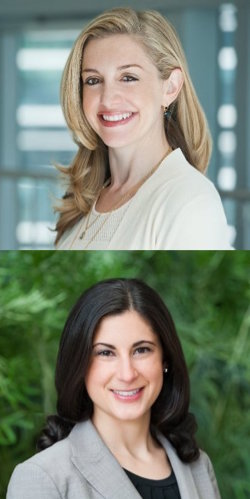 Most Bostonians look back on the blizzard of late 2014 less than fondly. But there was a silver lining for Massachusetts General Hospital, which found in the snowstorm the perfect test case for its then-fledgling telehealth program.
Most Bostonians look back on the blizzard of late 2014 less than fondly. But there was a silver lining for Massachusetts General Hospital, which found in the snowstorm the perfect test case for its then-fledgling telehealth program.
“Two years ago, Boston received some record-breaking snowfall,” Marcy Simoni, senior program manager for telehealth at Mass. General said at a recent event, the mHealth and Telehealth World Conference in Boston. “The city was closed for several days and the snow just piled and piled up. And so on those days we were able to mobilize and rapidly train patients and providers to do visits remotely. Providers were at home and they kept their clinics open and they were able to see patients despite the fact that the rest of the hospital was shut down. And while that was an emergency situation, it was a great opportunity for us as a team to really shift the perspective on when and where care can be delivered. …That was our first venture into remote virtual visits, but it’s now standard procedure.”
Since that fateful Blizzard, Mass. General has learned a lot about deploying virtual visits and Simoni, along with Director of Telehealth Sarah Sossong, shared several of those lessons at the event.
One lesson, from Sossong, is that it’s important to measure the progress of a program as you deploy it — and to think about all the different possible things to measure.
"If you can’t measure it, you can’t approve it,” she said. Billing codes and satisfaction surveys for both payers and providers offered some tracking, but there are other data points the hospital is just now starting to track.
“Right now we’re trying to implement new measurements that will get at how many providers are we training and how m any are actually doing visits,” Sossong continued. “There’s a significant gap there. And also, we’re trying to better manage the number of patients who are identified by providers and then how many actually go through the whole process and have a virtual visit with their provider. I think there’s probably a drop-off.”
Measuring just total visits, for example, could hide the fact that some providers are doing a lot and others are largely ignoring the option.
“We’ve been very fortunate to have some strong physician champions in most of our clinical areas,” Simoni said. “But when we looked closely at particular areas, we saw this trend. … where we have a few high-volume providers doing the majority of the visits, with the remaining providers doing little to no activity. So to break that adoption trend, our goal this year has been to get much broader adoption. Not just high volume, but deeper adoption. So we focused on different ways that we can engage providers and keep them engaged.”
Mostly, Mass. General has tried to increase provider adoption by making the process of setting up virtual visits easier for them. They’ve instituted a test call to familiarize them with the technology before their first visit, a built-in pop-up survey that will let them document and communicate any issues they have with the technology.
The hospital has found that video visits are helpful in many different areas of care but there are some standouts. They’re especially useful for behavioral health and psychiatric visits. They’ve been especially useful for post-surgery follow-ups, particularly for patients covered under Partner’s ACO, where reducing readmissions is so crucial. And they’re helpful for patients with complex care needs.
“Any kind of multidisciplinary clinic where you have a variety of providers that need to be involved has been very successful,” Simoni said. “We have a pedi-cardiology program where we have nutritionists, health coaches, behavioral psychologists, the MD, along with a few others on the team that would normally have the patient in and have them rotate to see all these different specialists. Now if you transition that to virtual, it’s not only more convenient for the patient, it’s actually making the clinic flow much more efficiently.”













